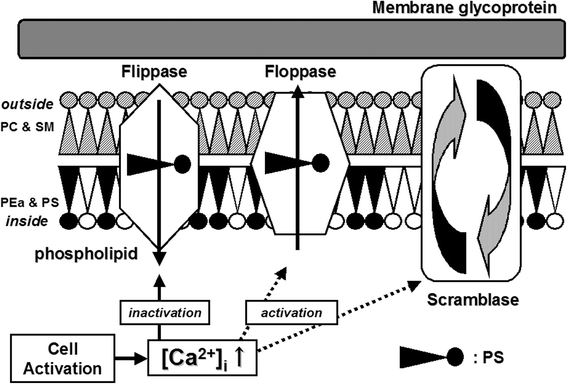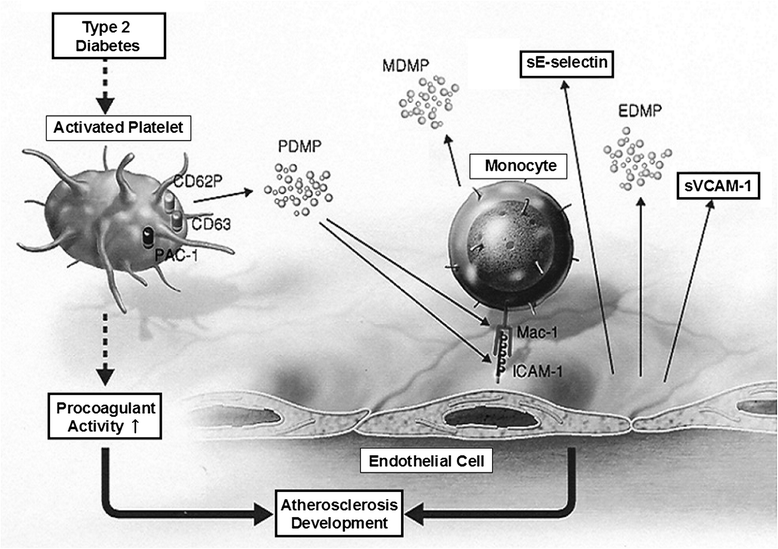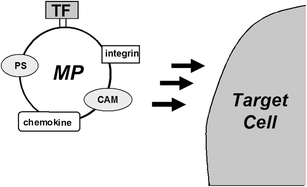Clinical significance of procoagulant microparticles
- PMID: 25705427
- PMCID: PMC4336124
- DOI: 10.1186/s40560-014-0066-z
Clinical significance of procoagulant microparticles
Abstract
Microparticles (MPs) are small membrane vesicles that are released from many different cell types by exocytic budding of the plasma membrane in response to cellular activation or apoptosis. MPs may also be involved in clinical diseases because they express phospholipids, which function as procoagulants. Although flow cytometry is the most widely used method for studying MPs, some novel assays, such as tissue factor-dependent procoagulant assay or the ELISA method, have been reported. However, the use of quantification of MP as a clinical tool is still controversial. Elevated platelet-derived MP, endothelial cell-derived MP, and monocyte-derived MP concentrations are documented in almost all thrombotic diseases occurring in venous and arterial beds. However, the significance of MPs in various clinical conditions remains controversial. An example of this controversy is that it is unknown if MPs found in peripheral blood vessels cause thrombosis or whether they are the result of thrombosis. Numerous studies have shown that not only the quantity, but also the cellular origin and composition of circulating MPs, are dependent on the type of disease, the disease state, and medical treatment. Additionally, many different functions have been attributed to MPs. Therefore, the number and type of clinical disorders associated with elevated MPs are currently increasing. However, MPs were initially thought to be small particles with procoagulant activity. Taken together, our review suggests that MPs may be a useful biomarker to identify thrombosis.
Keywords: Flow cytometry; Microparticle; Phospholipid; Procoagulant activity; Thrombosis.
Figures




References
-
- Jy W, Horstman LL, Jimenez JJ, Ahn YS, Biró E, Nieuwland R, Sturk A, Dignat-George F, Sabatier F, Camoin-Jau L, Sampol J, Hugel B, Zobairi F, Freyssinet JM, Nomura S, Shet AS, Key NS, Hebbel RP. Measurement circulating cell-derived microparticles. J Thromb Haemost. 2004;2:1842–1851. - PubMed
-
- Nomura S, Ozaki Y, Ikeda Y. Function and role of microparticles in various clinical settings. Thromb Res. 2008;123:8–23. - PubMed
-
- Burnier L, Fontana P, Kwak BR, Angelillo-Scherrer A. Cell-derived microparticles in haemostasis and vascular medicine. Thromb Haemost. 2009;101:439–451. - PubMed
-
- Morel O, Toti F, Hugel B, Bakouboula B, Camoin-Jau L, Dignat-George F, Freyssinet JM. Procoagulant microparticles: disrupting the vascular homeostasis equation? Arterioscler Thromb Vasc Biol. 2006;26:2594–2604. - PubMed
-
- Mesri M, Altieri DC. Endothelial cell activation by leukocyte microparticles. J Immunol. 1998;161:4382–4387. - PubMed
Publication types
LinkOut - more resources
Full Text Sources
Other Literature Sources
Medical

